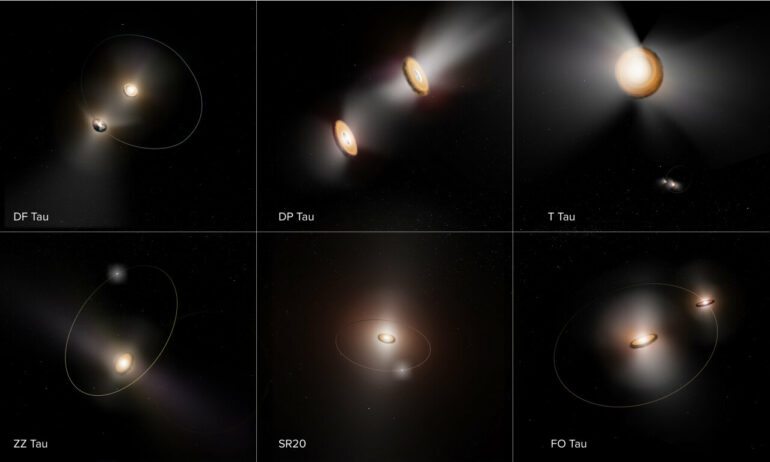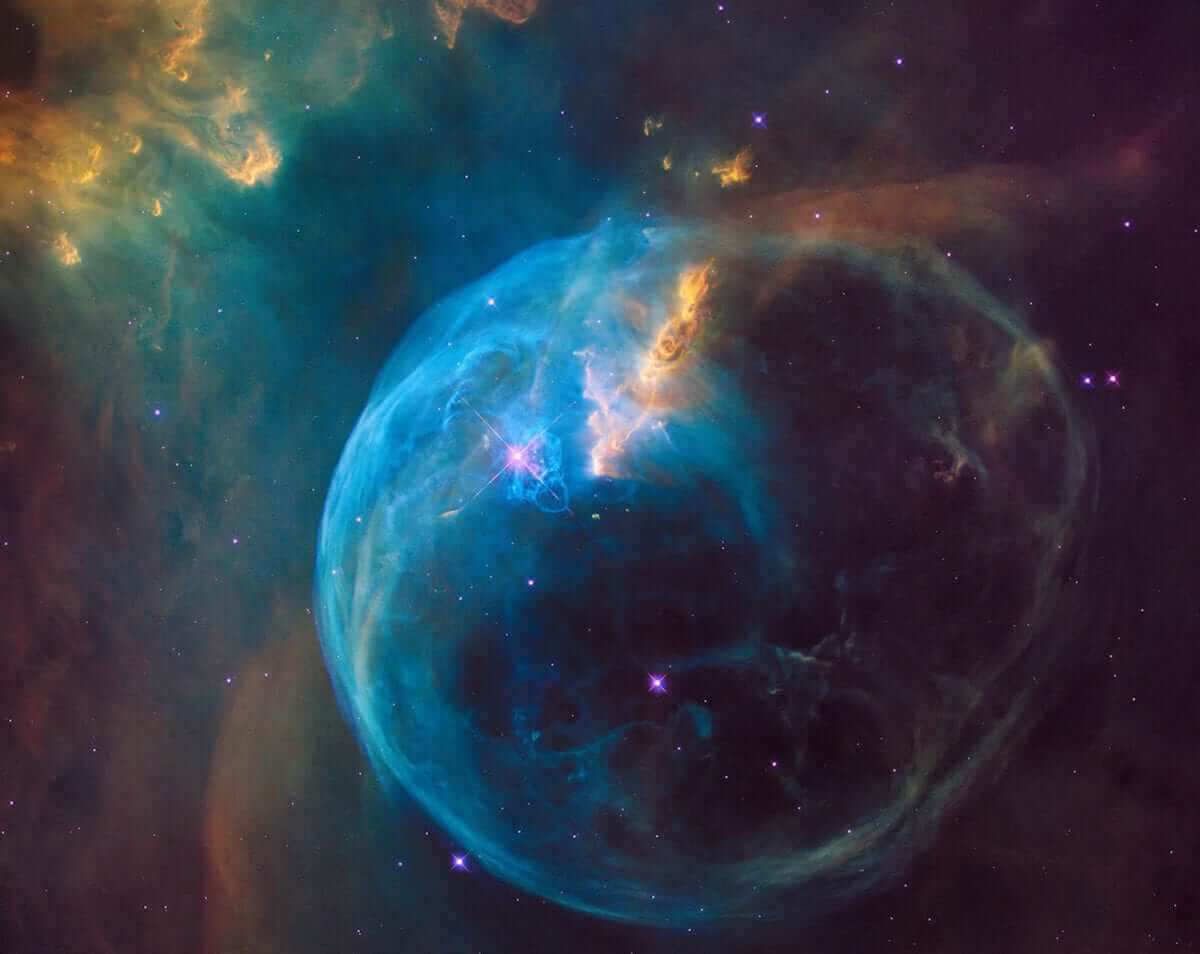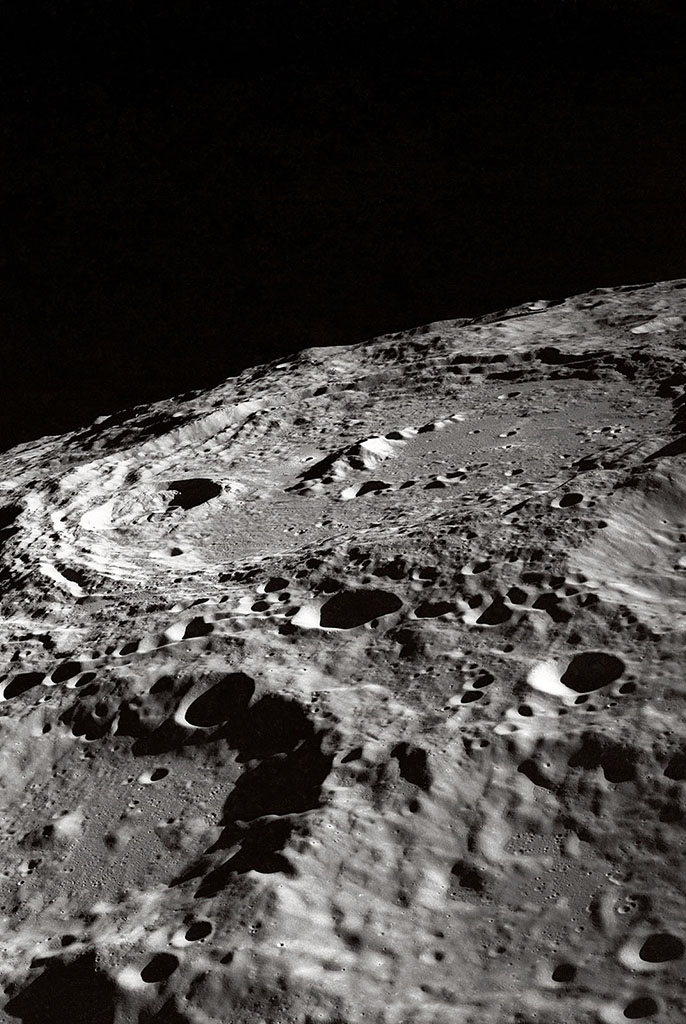Tucked away in a star-forming region in the Taurus constellation, a pair of circling stars are displaying some unexpected differences in the circumstellar disks of dust and gas that surround them. A new study led by researchers at Lowell Observatory, combining data from the Atacama Large Millimeter/submillimeter Array (ALMA) and Keck Observatory, has unveiled intriguing findings about planet formation in this binary star system, known as DF Tau, along with other systems in this region. The work is published in The Astronomical Journal.
DF Tau consists of two young stars with nearly equal masses, orbiting each other every 48 years. Since both stars likely formed together, with the same composition in the same environment, astronomers would expect them to share other things in common, like having similar circumstellar disks. But this is not the case—while the brighter, primary star has an active inner disk, the secondary star’s inner disk appears to have almost completely disappeared. These unexpected differences challenge current theories of disk evolution and planet formation.
Just like a potter’s wheel is used to shape clay into various forms, a circumstellar disk provides the materials and environment needed for planets to form. Over time, the dust and gas in the disk will clump together, eventually forming planets, moons, and other celestial bodies. The disks won’t last forever—as a star matures, and planets form, the disk gradually disappears. So what caused the unusual dissipation observed in the circumstellar disk of the secondary star?
High-resolution ALMA imaging, combined with optical and infrared data from other telescopes, allowed researchers to study, analyze, and compare the properties of the stars and their individual disks. This binary has a relatively small, tight orbit, which means gravity truncates the outer parts of the disk, but it is unlikely that the current binary orbit could alter the inner disk. Instead, other processes may be at work.
“The dispersal of circumstellar disks is a complicated process with many unknowns. By looking at systems that form together, we can control one major variable: time. DF Tau and other systems in our survey tell us that disk evolution isn’t strictly a function of time, other processes are at play,” shares Taylor Kutra of Lowell Observatory, lead author of this research.
Binary systems like DF Tau, and other sources in this ALMA survey, offer a natural laboratory to study how circumstellar disks evolve. Understanding these processes is essential for refining models of planet formation because disk evolution sets the timescale on which planet formation occurs.
This research highlights the diversity of disk behaviors and underscores the need for further studies to unravel the factors influencing their lifespans and structures. These findings not only deepen our understanding of binary star systems but also shed light on the broader mechanisms shaping planetary systems across the galaxy.
More information:
Taylor Kutra et al, Sites of Planet Formation in Binary Systems. II. Double the Disks in DF Tau, The Astronomical Journal (2024). DOI: 10.3847/1538-3881/ad900a
Provided by
National Radio Astronomy Observatory
Citation:
Double the disks, double the discovery: New insights into planet formation in DF Tau (2025, January 16)



